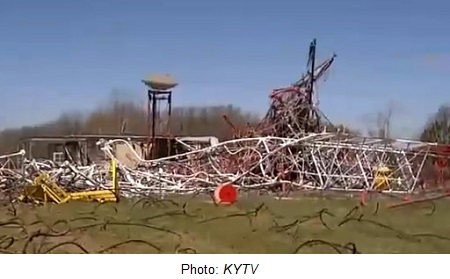UPDATE Steve Lemay and his company had been hired to do maintenance work on the 2,000-foot KOZK Ozarks Public Television tower operated by Missouri State University. Although Lemay was able to direct his crew to safety, he stayed behind and died when the structure weakened and fell. A wrongful death lawsuit has been filed against MSU, Tower Consultants Inc. and specifically named engineers, reports the Springfield News-Leader.
The donated tower was more than 50 years old, Inside Towers reported. The work was being done to prepare the structure for the broadcast repack.
The Lemay family alleges that a “dangerous condition” existed at the site and proved fatal to Steve Lemay. The job for which his company was originally hired involved structural maintenance of the tower. The project involved strengthening the tower so it would be strong enough to support the weight of an added antenna. The goal was to replace diagonal braces to enhance the stability of the tower.
However, workers said they heard strange noises and were able to escape before the tower fell. The Lemay family asserts that the accident happened for a number of reasons, starting with the lack of guy wires and proper equipment. They also cited improper supervision, and the involvement of engineers who were not licensed and certified to work on the project.
MSU and TCI declined to comment on an active lawsuit, but an OSHA report from 2018 provides some additional insights.
The report came to the following conclusion:
“Based upon the above, we conclude that:
- TCI’s suggested diagonal replacement procedure was flawed in that it compromised the effectiveness of the integrated surrounding braces and the load bearing capacity of the tower legs. A single diagonal brace could not be removed without affecting the integrity of the redundant brace because the braces share two common bolts at the diagonal/redundant connection.
- The cause of the communication tower collapse was the weakening of the compressive strength of the tower legs by removing the bolts at the connection of the diagonals to the horizontal redundant. The compromised redundant effectively doubled the unbraced length of the tower leg which reduced the compressive capacity of the tower leg.
- Lemay used an undersized come-a-long while removing the diagonal braces.
- Lemay failed to provide the design of the required temporary frame for diagonal replacement above or below a guy level.
- TCI failed to confirm the use/design of a temporary frame as TCI is required to approve the adequacy of the temporary frame prior to diagonal replacement according to TCI’s construction documentation.”




Reader Interactions